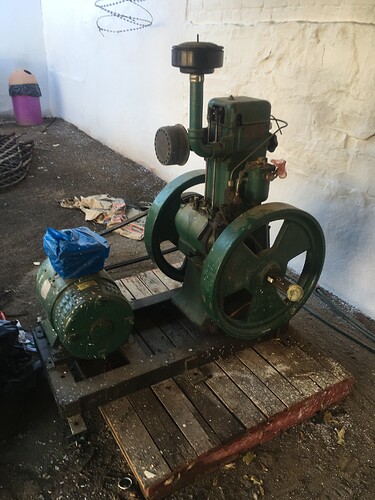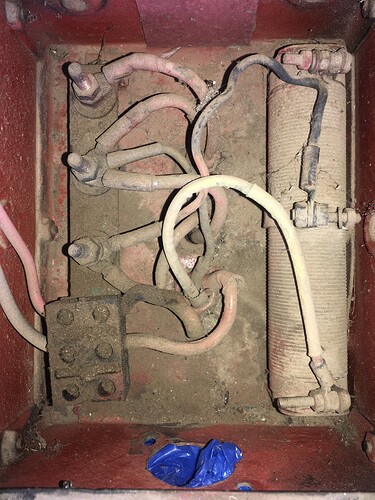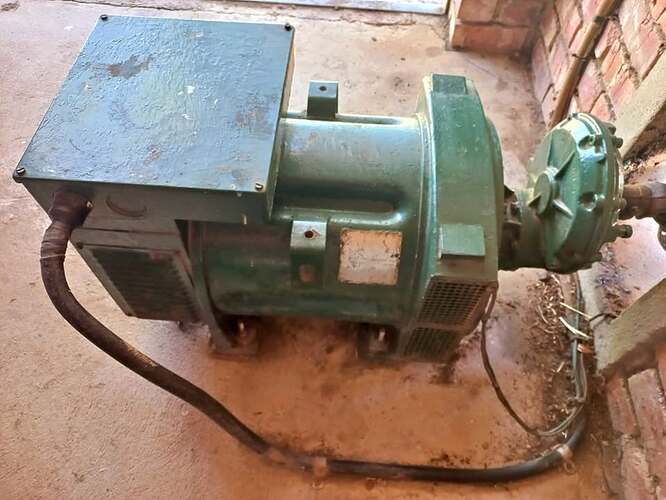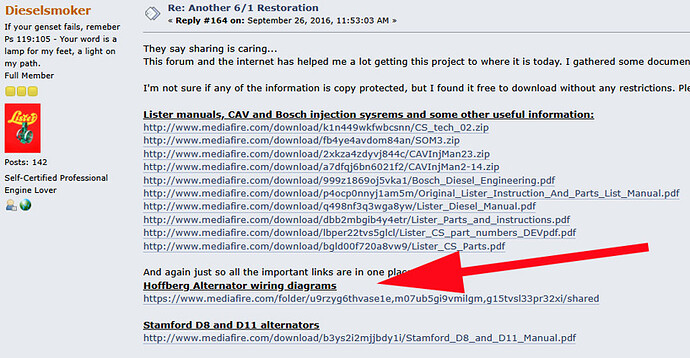Seen at a remote stopover in the Karroo.
These gensets were what our parents used for backup power. (Even precedes my era!)
Does anyone know what the adjustable power resistor’s function was for??
Perhaps something to do with output voltage (220V vs 110V)
Thinking of Ohms law ![]()
Just a wild guess…
It adjusts the field strength of the alternator, that is to say, the output voltage. This was before AVRs.
In the old days, people often made the mistake of speeding the engine up to get a higher voltage. All that did was make your clocks run fast.
I grew up with a gennie on our farm. I think we only got Eskom connections there around 1987…
This brings back lots of memories
I’m not familiar with these non automotive alternators…
Obviously the field voltage is DC but how was this generated??
Also was the DC output from a commutator type generator?
PS: I didn’t have time to strip the unit at the B&B where we were staying ![]()
By “alternator” I’m using the technically correct term for the AC-side of that generation plant. While we call the engine/alternator combination a “generator”, that is technically incorrect, but because we’re not pedants who ignore context we can let that go… at least until we need the right term ![]()
A generator makes DC. An alternator makes AC, at a frequency proportional to the engine speed.
That Hoffberg is a combination Generator/Alternator. Essentially two devices slapped together. The generator side makes 48V (probably closer to 60V) and the Alternator side makes 220V-230V. We had one just like it where I grew up, except it was 36V DC.
Like all alternators, the field is exited by DC. I believe it relies on a small amount of residual magnetism to get started, after which it self-excites. Making the DC is relatively trivial: A diode pack is all you need.
Additional trivia: The DC side also had a big resistor for limiting the charge current to the batteries. It was usually mounted somewhere else, not on the alternator. Likely because it got hot… very hot.
This looks just like an ols Lister engine. Even the same green colour.
All I can remember was that as a child starting it with those large heavy flywheels was a major job. We took turns to try and eventually someone would be able to turn the crank faster enough before the son when down. ![]()
![]()
We had Hatz engines on both our gensets (a bit like this one, but red). The Hatz was quite nice, it had a handsfree decompression mechanism. You’d turn the decompression lever about halfway, and then you had both hands free for cranking (which helped when you were like 13). The decompression lever would advance automatically and close after a few rotations, which gave you enough speed to get it started.
Later years I also discovered the joys of NOT having that auto-compression device. Then you have to hold the decompression lever with one hand while you crank with the other, and let it go when you have enough speed.
The most interesting one I saw had a spring-loaded decompression lever, and a pull-(rope)-starter. I never quite worked out how you’re supposed to hold decompression and yank the (fairly long) rope, but I discovered that if you advance the crank just enough you could get the decompression lever to get stuck behind a cam lobe. Yanking the pull-start would then release decompression about half-a-rotation later, which was enough to get that generator started on that very very rainy April weekend on the banks of the Otjivero dam… ![]()
Edit: Oh, and of course, I forgot a very important part! That DC part in the Hoffberg? Can be turned into a starter motor. If this was wired correctly, the farmer’s wife could start the engine with the big green start button. Sometimes they even wired a remote start into the house.
Remote stop was sometimes a long length of “bloudraad” running to the diesel shut-off. Tonight, you simply yanked the wire to stop the engine. Of course, where I grew up, it was more involved. You had to manually swap back to the inverter, which meant you had to walk to the genset to stop it and swap it over.
We had one of these diesel engines on a borehole pump. As a kid I once managed to turn the handle fast enough and it started and I got the fright of my life. I the ran for cover leaving the starting handle on the crankshaft. This kept spinning around until it worked its way off the shaft and it flew into the air.
Needless to say this incident was kept very quiet…
The Hatz engines had a spiral arrangement that literally kicked the handle out when it started. You could of course still hurt yourself, but breaking an arm (like in the old car-starting days) wasn’t too much of a risk anymore.
Similar story first time I managed to start my grandfather’s old Lister on the farm…
Rheostat… You are showing your (lack of) age ![]()
Yes a bit more accurate…
Netso … ek het nog die manuals ![]()
Goeie dag, ek’t presies dieselfde Kva alt. maar iemand het hom uitmekaar gehaal. ek sou kon reverse engineering toepas as hy nog aanmekaar was, maar ek’t nou sy bedradings diagram nodig. Kan jy help.
Groete Dries.
Ek was te jonk toe ek met die laaste een te doen gehad het, en Pa het nooit met die bedrading gepeuter nie. Miskien help bogenoemde foto. Ek dink nie enigiemand op hierdie forum is experts nie, maar miskien kry @mygoggie nog email as ons sy naam noem. Hy was twee jaar laas op die forum.
Here’s another one.
I try to figure out what these things are and also what their function was.
I assume that this is the generator and that we can’t see the drive shaft from the engine in the next building?
What on earth is the diaphragm thingy, water cooling??
Dankie plonkster, sal maar geduldig wees.
Groete




